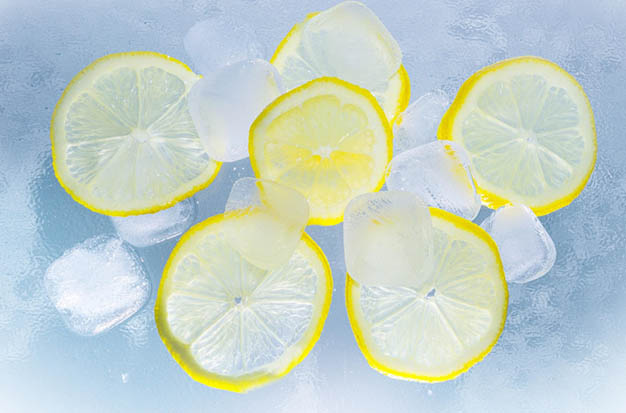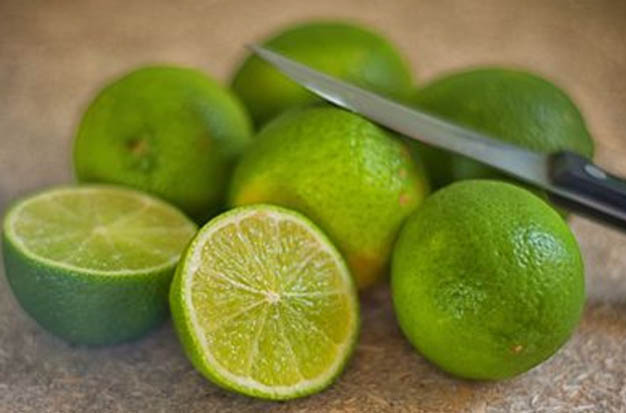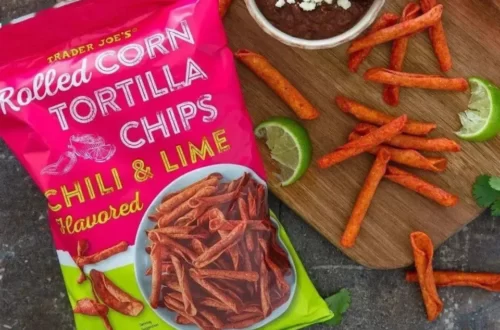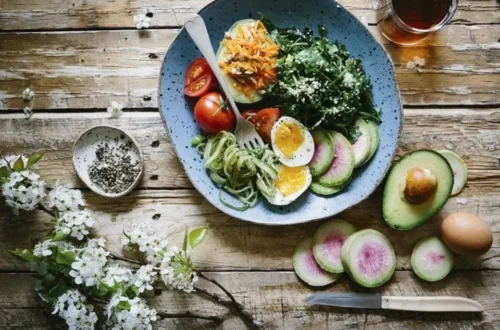
Is a Lemon a Fruit or a Vegetable?
We all have such experience. We will see lemon in the vegetable area of one supermarket and then in the fruit area of another supermarket. So is lemon a fruit or a vegetable? Don’t worry, this guide will help you understand the lemon species in depth.
Is Lemon a Fruit or a Vegetable?
Lemon is a kind of fruit, specifically citrus fruit. It is classified as a fruit because it still contains seeds and is used in a way more similar to fruits than vegetables. You see more lemons in candy than in delicious dishes. Whether it’s lemon juice or lemon peel, its taste is very common in candy.
How to Distinguish Between Fruits and Vegetables?
Before we discuss whether lemons are fruits or vegetables, let’s start with the basics. So, how do you judge whether something is a vegetable?
Here are some characteristics of fruits and vegetables.
- Seeds or no seeds?
One of the main differences between fruits and vegetables is that fruits contain seeds while vegetables do not. This is because the fruit is an ovary containing ovules. These ovules become seeds after reproduction. Therefore, you can say that seeds are the result of flower reproduction. On the other hand, vegetables are only a part of plants, such as leaves, roots, etc. There is no breeding here. Therefore, there are no seeds inside or outside them. So here’s a trick: next time you see any vegetable with seeds, remember that it’s fruit, not vegetables!
- Taste
Even if taste is not the main factor determining whether something is a fruit, it can still be proved to be correct in most cases. Fruits can have many flavors. For example, they are sometimes sweet, sour, bitter or sour. However, if you have tasted vegetables, you may notice that each vegetable has a different taste. In most cases, you cannot name or classify flavors.
- Nutrition
Fruits and vegetables are a little low in fat and high in fiber. However, most fruits are high in sugar, while only some vegetables, such as starchy vegetables (potatoes, beets), are high in sugar.
What Fruit is Lemon?
Lemon comes from an evergreen tree. There is no doubt that it is a kind of fruit, which is why: fruit is described as any structure with seeds. Therefore, a fruit must be a seed structure before it can be correctly classified as a fruit, not a berry. Berry is a kind of fruit without stone pits in the middle, which is its most obvious feature, making it different from the fruit with stone pits.
Genetic analysis of lemon showed that it had the same DNA as the other two plants, lemon and bitter orange. This basically means that the two plants are evergreen trees formed by intentional hybridization. However, this does not mean that lemons are unnatural, but that they are the result of plants trying to produce better products.
Seeing the difference between fruits and vegetables above, you can judge that lemon is a fruit rather than a vegetable.
Why is Lemon a Fruit Rather Than a Vegetable?
Let’s look at some of the main reasons why lemons become fruits rather than vegetables.
- Lemon contains seeds
There is no doubt that lemon contains seeds. These seeds are inside. Once you cut the lemon, you can see a lot in a lemon! This clearly explains why lemons are considered fruits rather than vegetables.
- Lemon is a hybrid of two other fruits
Another reason for lemon to become a fruit is that it is an artificial hybrid of two fruits rather than vegetables. At first, two citrus fruits, including bitter orange and citrus, were hybridized together to form a new fruit, which is now called lemon. Therefore, the whole family of lemon also proves why it is a fruit.
- Lemons grow from flowers
If you have been to the lemon farm, you may notice that there are beautiful white flowers on the lemon tree. These flowers are responsible for turning their ovaries (the reproductive part of the flower) into lemons. If lemon is a vegetable, it should be completely another part of the plant, just like leaves or roots. Instead, it develops from the ovary of a flower, which makes it a fruit.
Therefore, these three reasons prove that lemon is a part of fruit rather than vegetables. Now, what fruit is lemon? Let’s understand this.
Is Lemon a Berry?
This is a surprising fact that you may not know – lemon is actually a berry! Yes, this may sound confusing, but let’s understand what berries are in the botanical sense and why lemons are considered to be one.
A berry is a fleshy fruit that contains three different parts, such as:
- Exocarp, also known as outer layer
- Mesocarp, also known as succulent mesocarp
- Endocarp, also known as the inner layer of seeds
In addition, berries should also contain more than two seeds. Now, you can understand why lemons are considered berries. Lemon is both a fruit and a berry, because it contains an outer layer, namely peel and peel. The middle layer of lemon is also called pulp, which is fleshy rather than hard. The innermost layer is composed of more than two seeds. Therefore, lemon is a kind of berry and fruit!
What Can Lemon be Used For?

This strong sour taste makes lemon juice an important element in beverage or food formulas. Because of its acidity and flavor, it will always be a key part of the kitchen. Simply put, without the obvious acidity brought by lemon, the taste of beloved pie and other cakes would not be exactly the same. Because lemons are fruits, they are usually used for desserts. You can also add lemon to delicious dishes to increase acidity, but we will focus on our favorite lemon dessert.
Let’s take a look at some popular lemon desserts. Some of our favorites include lemon meringue pie, lemon strips and lemon sorbet. Nothing is easier than a dessert with only three ingredients, right? If you want to solve your lemon dessert problem quickly, please check out my lemon pie recipe.
- Lemon Jam
Jam, jam or curd are made from fruit only. In fact, jam is defined as “preserved fruit”. Lemon is one of them. You can prepare a batch of fresh lemon jam at home. Making jam is a huge process, but in short, you just need to mix lemon flesh and peel with sugar and water.
Then boil the ingredients until they are well mixed. Finally, let the jam cool. This is just an overview, so be sure to read the correct recipe!
- Lemon Sorbet
Although you do have ice cream and popsicles with vegetables now, traditionally, these foods are made only with fruit or artificial fruit seasonings. Lemon ice cream and popsicles are very popular today. Both kinds of food have sweet and sour taste. In addition, because lemons have a cooling effect, they are also very suitable for summer!
- Lemon Cake
Lemon pie, cake, muffin and pie have become people’s favorite nowadays. You can find many baking recipes with lemon as the main ingredient. Although lemon tastes sour, it complements baked goods well due to its fruity and refreshing nature.
- Lemon Sugar
Most candies today have a fruit flavor, whether natural or artificial. Therefore, lemon is also very popular here. Lemon has both sour and bitter taste, so it is suitable for the sugar properties of candy. They are also refreshing and cooling. These are just some items where lemons are used as fruits rather than vegetables. You can also use them in fruit salad or juice!
Interesting Facts About Lemons
If you are more interested in lemons now, let’s tell you some more interesting facts about lemons!
- There are different types of lemons
Do you know that there are more than 30 kinds of lemons in the world? Lemon looks like a simple fruit, but there are many differences in size, color, number of seeds and even taste.
Today, the lemons we buy in the market are called Lisbon lemons. There are others, such as Eureka Lemon, with fewer seeds and more juice!
- Lemon plants bear fruit all year round
The reason why you find lemon so rich is that lemon plants can bear fruit all year round. In fact, a lemon tree can produce nearly 600 gallons of lemon every year! The only thing lemon plants need to produce fruit every year is enough water. If there were fewer, the plants would not bloom. Well, no flowers means no lemons.
- Lemon is rich in vitamin C
Most of us know that lemon is rich in vitamin C, but did you know that daily intake of lemon juice can meet 50% of our daily vitamin C needs? Yes, as an adult, you need about 65-90 mg of vitamin C. Lemon contains 31 mg of vitamin C.
- Lemon flowers have a beautiful fragrance
Lemon smells refreshing, but a little bitter. We can’t say the same thing about lemon flowers, because their smell is considered to be “the happiest smell in the world!”.
Lemon flowers have a more subtle but fresh lemon like smell. That’s why they also attract many butterflies.
- Lemon has antibacterial properties
Lemon contains two acids – citric acid and ascorbic acid. These two acids are very helpful in killing bacteria. Bacteria can only survive at a specific pH. However, because lemon contains acidic substances, the pH value may decline, resulting in the death of most bacteria.
- Lemon is negatively charged
There is a little chemistry here. Most of the fruits we eat today are positively charged because there are more protons and fewer electrons. On the other hand, lemons have more electrons than protons, which makes them negatively charged.
- Lemon changes color with temperature
At first, lemon was green and very bitter. However, when they mature, the color turns yellow. The taste has also become more citrus rather than bitter. Color changes occur when the temperature rises.
What Other Vegetables Are Actually Fruits?
Keep in mind that the definition of fruits and vegetables varies according to culinary and botanical classifications. Therefore, some cooking vegetables are fruits in the botanical sense, and vice versa.
Therefore, in addition to lemons and tomatoes, from a botanical point of view, there are more vegetables that are actually fruits.
- Pepper
It’s certainly surprising, isn’t it? Most peppers, whether sweet or Mexican, are fruits, even if they are cooked in a similar state to vegetables.
All peppers have outer walls and many seeds. This turns them into fruits instead of the vegetables we mentioned earlier!
- Cucumber
Cucumber is widely used in pickles and salads. However, because of their structure and growth, they are regarded as fruits. Cucumbers have an outer layer, a fleshy middle layer, and an inner layer containing a large number of seeds! In addition to cucumbers, other gourds are also fruits in the sense of plants.
- Okra
If you have seen okra before, you may already know that pods actually grow from flowers. Therefore, okra is composed of many seeds, which are classified as fruits. In addition, okra is a dry fruit, because it opens from two seams and has multiple seeds inside.
- Olive
Have you ever thought that olives belong to the same category as mangoes, peaches, dates, etc.? Olives are drupes or drupes because they have a hard core covered by a fleshy outer layer. This is also found in mangoes and peaches, which have hard stones inside.
- Avocado
Like tomatoes and lemons, avocados are berries! They are composed of outer and middle fleshy layers, inner layers and seeds. Even though most berries contain multiple seeds, avocado is an exception because it is a single seed berry.
- Peas
Peas are not all fruit. The pod is a fruit, while the pea is actually a seed. Pods are considered a kind of dried fruit because they can split at two seams. It contains a variety of seeds, called peas.
- Pods
Like peas and okra, pods are also considered fruits. The beans inside are actually seeds. These are just some examples of fruits and vegetables. From a botanical point of view, there are more such vegetables are fruits.
Conclusion
Lemon is a natural fruit. They are the staple food in kitchens everywhere and are used for various cooking purposes. It is estimated that lemon juice contains 5% citric acid, so it has a strong sour taste. On the other hand, the pH value of lemon juice is set at 2.2, making it one of the most acidic natural substances on earth.
Find more healthy food & lifestyle next!
- How Long Does Cooked Ground Beef Keep in the Fridge?
- How Long Does Pizza Last in the Fridge – How to Check
- How Long to Bake Chicken Breast at 400 – How to Cook
- How Long Does It Take For Shrooms To Kick In?
- What Foods Can Help You Control Blood Sugar?
- How To Peel Fruit And Veg
- How Long Can You Keep Raw Chicken in the Fridge?
- How Much Vitamin C Do You Need During Pregnancy?
- Can My Dog Drink Apple Juice? You Should Know!
- Bye Bye Belly Juice Side Effects You Should Know





Average Rating